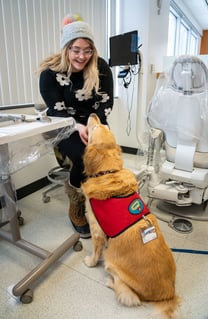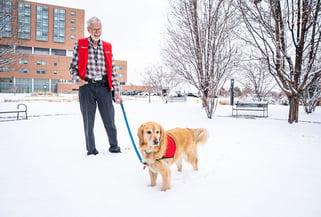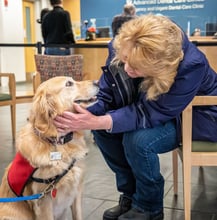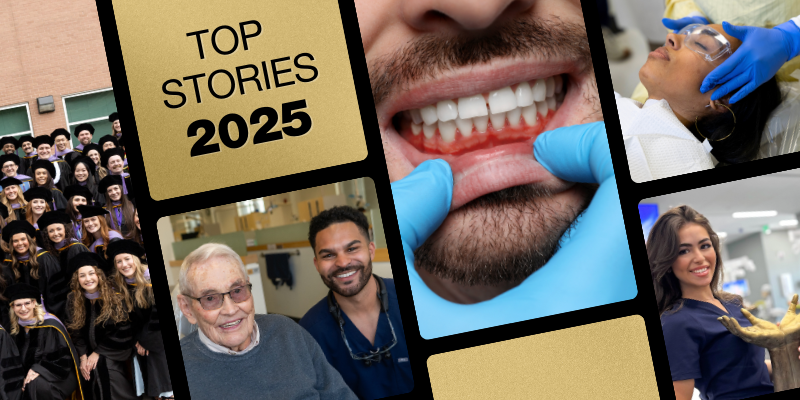A visit to the dentist can leave you with a case of sensory overload, but the University of Colorado School of Dental Medicine is calming patients’ fears with the help of a new dental therapy dog. Lucy, a five-year-old golden retriever, roams the clinic halls—easing patient’s anxiety and providing them comfort during routine cleanings and procedures.

Lucy’s recent visit to the school came at the perfect time for Lauren Rivera. The Metropolitan State University of Denver student was using a lip retractor to keep her mouth open while being treated in one of CU Dental’s clinics. During her examination, she was able to bury her fingers into the animal’s fur—an experience that appeared just as satisfying to the dog.
“I’d go to the dentist more often if I could hang out with the dog,” says Rivera, who owns a hundred-pound mastiff named Rocky.
Scientific studies show a variety of health benefits associated with therapy dogs, which include reducing stress levels, alleviating depression and improving the overall health of patients in the intensive care unit. One recent finding even shows that children read more in the presence of dogs.
Lucy’s owner, Rich O’Day, is an oral surgeon who has retired from dental practice and teaching part-time at the University of Colorado School of Dental Medicine. He has a good understanding of what patients are feeling when seeing the dentist.
“I don’t think there’s anyone who isn’t scared to see the dentist,” says O’Day. “It’s a matter of being scared of the unknown. You’re afraid that somebody is going to inflict pain.”

Lucy and her owner, Rich O'Day |
“For some patients, a comfort animal can decrease anxiety and enhance their sense of well-being,” says CU Dental Dean Denise Kassebaum, DDS, M.S. “I was overjoyed that Dr. O’Day is willing to bring Lucy into the school as a comfort ambassador.”
O’Day decided to add CU Dental to the pair’s weekly rotation of visits which included Children’s Hospital Colorado and Denver International Airport.
Lucy is certified through the Alliance of Therapy Dogs, a process that involves a battery of health tests to determine if she is physically able to interact with hundreds of people during a typical visit. She also went through a series of exercises to determine if she could handle loud noises and ride elevators or buses.
Receiving certification was a lot less strenuous than what’s required of service animals who assist people who are physically or psychologically impaired or who suffer from an ailment such as diabetes or epilepsy.
 “Most people are hesitant to pet Lucy because they think she’s a service dog,” O’Day says. “But once you explain to them that she’s a therapy dog, the first thing you see is a big smile because they want to pet her.”
“Most people are hesitant to pet Lucy because they think she’s a service dog,” O’Day says. “But once you explain to them that she’s a therapy dog, the first thing you see is a big smile because they want to pet her.”
That’s exactly the reaction Lucy received from Leslie Carrico, who was waiting for her husband to be seen at CU Dental. Interacting with the dog was a much-needed distraction for the Northglenn, Colorado woman.
Between pets, Carrico spoke of her love of animals. “They bring joy and happiness,” she says. “And they’re a good distraction. They bring a smile to your face and your heart.”



